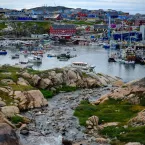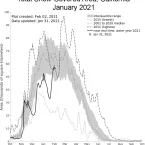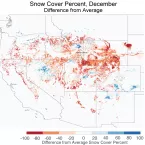Our Research
As climate changes, how do Earth's frozen areas affect our planet and impact society?
In this section
Related News & Stories
Filter by:

Analysis - Ice Sheets Today
With a correction applied, a first look at the 2020 to 2021 season points to an intense melt season in the northernmost and southernmost Antarctic Peninsula, but generally below-average melting elsewhere on the continent.

News Release
QGreenland, an open-source mapping tool that aids in the discovery and teaching about Greenland, is now available from the National Snow and Ice Data Center (NSIDC) and its partners.

Analysis - Snow Today
January 2021 was the lowest in the 21-year satellite record for average snow-covered area and snow cover days in the western United States. In late January, an atmospheric river brought large increases in snow cover and snow water equivalent in California.
Analysis - Sea Ice Today
Arctic sea ice extent for January 2021 tracked below average, with the monthly average finishing sixth lowest in the satellite record.

News Release
As climate change warms the Arctic more than twice as fast as the rest of the planet, new challenges abound for the communities that live in the region, including food sovereignty, coastal erosion, increasing shipping traffic and more.

Analysis - Snow Today
December snow-covered area and snow cover days in the western United States were below average compared to the previous 20 years. Storms in mid-December bolstered the snow-covered area but not enough to bring it close to the December average.